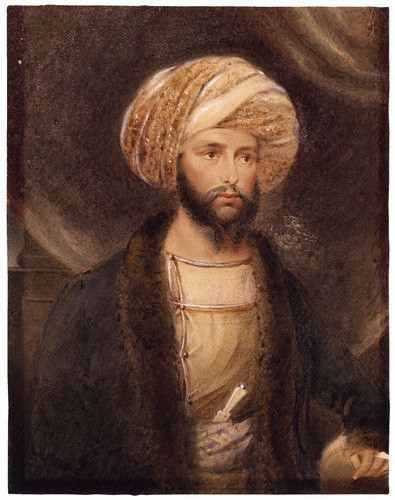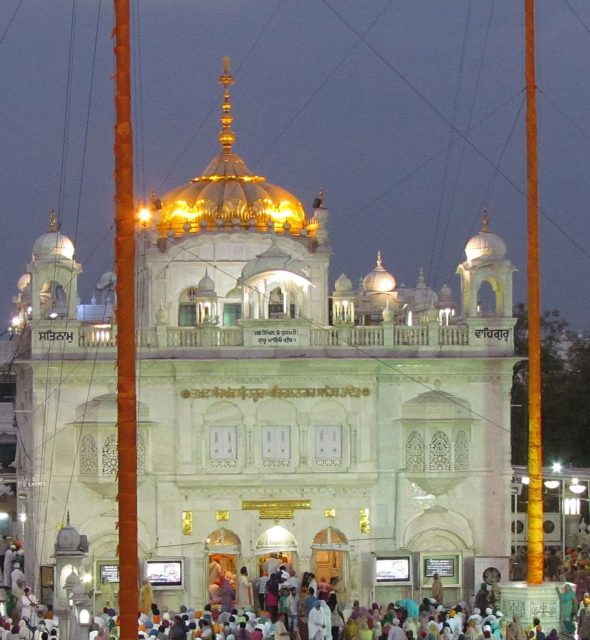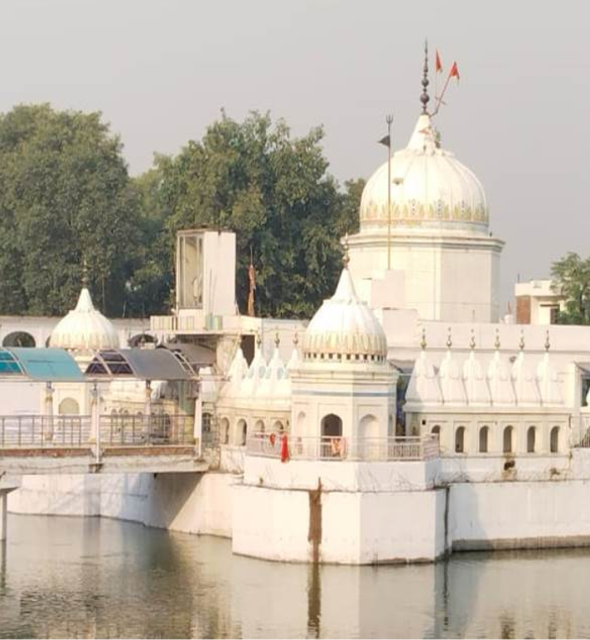
ABBOTT, SIR JAMES (1807-1896), British Resident\'s assistant at Lahore, capital of the sikh kingdom, after the first Anglo - Sikh war (1845-46), was born on 12 March 1807, the son of Henry Alexius Abbott. Passing out of the military college of the East India Company at Addiscombe, England, Abbott received commission as a second lieutenant in the Bengal artillery in 1823. In November 1830, he joined the army of the Indus, under Sir John Keane, for the invasion of Afghanistan. In 1842, he was appointed assistant to the British Resident at Indore.

ABCHAL NAGAR, more correctly spelt Abichalnagar (abichal, lit. firmly fixed, unshakably rooted), i.e. City Everlasting, is the name Sikh tradition lias given Nanded, a district town in Maharashtra. The place is sacred to Guru Gobind Singh, who passed away here on 7 October 1708. The shrine honouring his memory is treated as a takht, seat constituting decisive religious authority for the Sikhs, and is named Takht Sachkhand Sri Hazur Sahib, Abchalnagar. The name was probably suggested by a Scriptural line abichal nagaru~gobind guru ka namu japat sukhu paia ram (rooted steadfast stands the City of the Master Lord where solace is attained by repeating the Name (GGS,pg 783), usually interpreted as referring to the City of Amritsar founded by Guru Ram Das, Nanak IV.

ACHAL SAHIB, GURDWARA. sacred to Guru Nanak, is located on the boundary of Salho and Chahal villages along the Jalandhar Batala road, 6 km south of Batala (31M9\'N, 75°12\'E) in Gurdaspur district of the Punjab. The low mound on which the Gurdwara is situated, in close proximity of the ancient Hindu temple dedicated to Kartikeya, son of Lord Shiva, is popularly known as Achal Vatala. The Achal temple had since old times been a place of pilgrimage visited by sadhus from distant parts, especially during the annual fair held on the occasion of Sivaratri festival.
ADAM, BHAI, also mentioned as Uddam in some chronicles, was, according to Giani Gian Singh, Twarikh Guru Khalsa, a Siddhu Jatt of Brar clan living at Vinjhu, a village near Bathinda (30°-14`N, 74°-58\'E). He had no male child and, advancing in years, he along with his wife came to Amritsar to devote himself to serving Guru Ram Das. Besides partaking of the holy sangat morning and evening, he daily brought two loads of firewood from the jungle, one of which he contributed to the Guru ka Langar, selling part of the second to buy food for himself and storing the remainder. Once on an extremely cold night a large number of Sikhs arrived to visit the Guru.
ADDAN SHAH, BHAI (1688-1757), third in succession to Bhai Kanhaiya, founder of the Sevapanthi sect, was born in 1688 in the village of Lau in Jhang district, now in Pakistan. His parents were of a devout temperament and he inherited from them a deeply religious bent of mind. He learnt Gurmukhi and got training in the exegesis of Sikh scriptural texts from Bhai Gurdas Dakkhani, a leading Sikh of Guru Tegh Bahadur`s time. He also remained in the company of Bhai Seva Ram, a disciple of and successor to Bhai Kanhaiya, for a long time and ultimately succeeded him as chief of the Sevapanthi sect.
BANGLA SAHIB GURUDWARA, ROHTAK This Gurdwara is dedicated to the Ninth Guru, Guru Tegh Bahadur Sahib Ji. He came here in 1675 while going from Jind to Delhi. He stayed at this place for a few days. A well that existed at the time of his visit is also present but has been filled up now. Location This Gurdwara is located on Jind Road, near Mataji Gate. It is about one and a half kms from the Railway Station.









